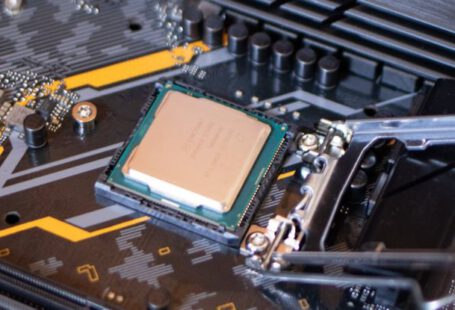Firmware Updates: The Key to Unlocking Hardware Performance
In a world where technology is constantly evolving, the need for hardware to perform at its best is crucial. Firmware updates play a vital role in ensuring that hardware devices function efficiently and effectively. By regularly updating the firmware of hardware components, users can experience improved performance, enhanced features, and increased stability.
Enhanced Compatibility and Performance
One of the primary benefits of firmware updates is that they can enhance the compatibility of hardware devices with other components. As technology advances, new software and hardware are released, often requiring updates to ensure seamless integration. Firmware updates can address compatibility issues, allowing hardware devices to work more efficiently with new software applications and operating systems. By updating the firmware, users can unlock new features and functionalities that can improve the overall performance of their hardware devices.
Bug Fixes and Security Enhancements
Firmware updates also play a critical role in addressing bugs and vulnerabilities in hardware devices. Just like software, hardware can have bugs that affect performance or expose devices to security risks. Firmware updates often include bug fixes and security patches that can address these issues, ensuring that devices operate smoothly and securely. By staying up to date with firmware updates, users can protect their devices from potential threats and vulnerabilities, enhancing the overall security of their hardware components.
Optimized Power Management
Another way firmware updates can improve hardware performance is by optimizing power management. Energy efficiency is a key consideration for many users, especially in devices like smartphones and laptops. Firmware updates can include improvements to power management algorithms, allowing devices to conserve energy and extend battery life. By updating the firmware of their devices, users can enjoy longer battery life and improved performance, especially when using resource-intensive applications or multitasking.
Improved Stability and Reliability
Firmware updates can also enhance the stability and reliability of hardware devices. Over time, hardware components may experience issues that affect performance or cause system crashes. Firmware updates can address these stability issues by optimizing the operation of hardware components and ensuring that devices function smoothly. By keeping firmware up to date, users can minimize the risk of system failures and enjoy a more reliable computing experience.
Future-Proofing Hardware Investments
Regularly updating the firmware of hardware devices is essential for future-proofing investments. As technology continues to evolve, older hardware may struggle to keep up with the demands of new software and applications. Firmware updates can extend the lifespan of hardware components by introducing new features and improvements that enhance performance and compatibility. By staying current with firmware updates, users can prolong the usability of their hardware devices and maximize their investments.
Unlocking the Full Potential of Hardware
In conclusion, firmware updates are a powerful tool for improving the performance of hardware devices. By addressing compatibility issues, fixing bugs, optimizing power management, enhancing stability, and future-proofing investments, firmware updates can unlock the full potential of hardware components. Regularly updating the firmware of devices is essential for ensuring optimal performance, security, and reliability. By taking advantage of firmware updates, users can experience the benefits of improved hardware performance and enjoy a more efficient computing experience.





